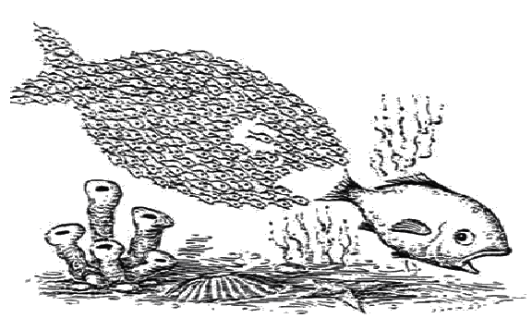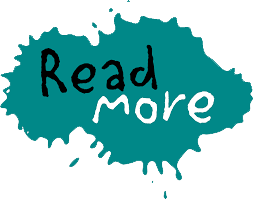
A study of health policy process in India with the National TB Program as case study between 1994-98 noted that “there is thus little countervailing power to the strong interests” namely of the economic interests of the pharmaceutical industry and the medical professional lobby in health policy and practice (1).
With debates about the role of the state, the increasing emergence of multi state actors–trans-nationals, and subsequent weakening of state institutions in health, there was a perceived need for a countervailing power supported by people and communities, and especially by those in the community who are marginalized or socially excluded by the current economic, political, social and cultural policies. It is the ability to demand, expand and occupy the space for social justice oriented engagement; to increase voice, negotiations, democratic dialogue in decision making processes; or even press for evidence based discussion; that is becoming the main justification for the salience of the civil society / social movement phenomena in health.
This also explains the wide spectrum of the phenomena– with a range of campaigns and movements that have emerged at national and global level. Spaces have been developed by civil society and social movements while engaging with the socio political system. There was an evolution in India particularly after the ‘Phase of Emergency’ during the late 1970s when democratic functioning was suspended. This development of civil society was best exemplified by a critical thought current, the Medico Friend Circle (MFC) which celebrated its 40th anniversary in 2014.
Ten high profile initiatives given below, focus on diverse health /social /economic /cultural or political challenges, provide an overview of an emerging countervailing power in global policy making2,3. Many address specific health related issues, while others are more indirectly related to health. In all of them civil society formations comprised an important element of a countervailing power initiative encouraging, precipitating, provoking, and sustaining change. Taken together they represent the varying potential roles that civil society could play towards Health for All.
Key civil society movements/Campaigns -1981-2011
| YEAR | CAMPAIGNS | ISSUES RELATED TO HEALTH DEVELOPMENTS |
|---|---|---|
| 1981 | International Breast feeding Action Network (IBFAN) (Europe) | Campaign led WHO and UNICEF to establish the international code of marketing of breast milk substitutes (The international code) |
| 1990s onwards | Treatment Action Campaign (TAC) (South Africa) | The People’s Health Charter adopted and global and country level people’s health circles evolve. |
| 2000 | First People’s Health Assembly, Savar, Bangladesh) | HIV/AIDS patients win the right to treatment and support in South Africa. This influences the global movement of People Living with HIV-AIDS |
| 2000s | Right to Water campaign,(Bolivia) | People protest successfully against the privatization of water in Cochabamba |
| 2003 | Jan Swasthya Abhiyan – JSA (PHM India) launched a Right to Health Care Campaign in collaboration with National Human Rights Commission (NHRC) | Right to health hearings and People Health Tribunals (Jan Sunwais) resulted in pressure on public health systems to become accountable, and raised awareness of health rights among masses. Led to national action plan to operationalize the Right to Health – jointly drafted by NHRC and JSA |
| 2003 | Anti Iraq war, Global | 30 million people in 800 cities joined the campaign against the US led invasion in Iraq ( Probably the largest demonstration in history) |
| 2003 | Framework Convention Alliance (FCA) and network for accountability of tobacco trans-nations | The Framework Convention on Tobacco Control (FCTC) emerged through this process of civil society pressure. |
| 2004 | People’s Health Movement India’s pre election dialogue | Emergence of the National Rural Health Mission (NRHM) India, including a communitization component. Setting up of the NRHM Advisory Group for Community Action (AGCA) |
| 2007 | End Water Poverty Coalition of Southern and Northern | NGO’s promoting access to sanitation and water supply as a human right |
| 2010 | The Moviemento Ciudadano por la Salud ( Citizens movements for health) Guatemala | Part of the Global Right to Health Campaign and working for monitoring and evaluating health, equity, and human rights from citizens perspective. Now part of a Global Community of Practice of similar ‘bottom up’ approaches in India, Zimbawe, Peru, Uganda, and other countries. |
Countervailing Movement
In a civil society report in India in 1998 by the Independent Commission on Health in India (ICHI) SOCHARA contributed an article cited below highlighting the need for such a phenomena (called countervailing movement) as a policy imperative.
“For too long the medical profession and the medical education sector have been directed by professional control and debate. It is time to recognize the role of the community, the consumer, the patient and the people in the whole debate. …… What is needed is a strong countervailing movement initiated by health and development activists, consumer and people’s organizations that will bring health care and medical education and their right orientation high on the political agenda of the country. All those concerned about ‘peoples needs’ and ‘people’s health’ will have to take on these emerging challenges as we approach the end of the millennium”.4
Efforts towards social change in health, stimulated by civil society and social movements outlined in the table above have been well documented. The Global Health Watch 3 report of the PHM5 records this phenomena succinctly by observing ‘changed focused strategies deployed by social movements,…… include; practicing differently; policy critique and advocacy; service system reform and development; institutional reform and innovation; delegitimization and inspiration’. There is much further grey literature together local knowledge and awareness about the myriad local groups addressing locally relevant issues. Much of this is in local languages.

- Narayan T. A Study of Policy Process and Implementation of the National Tuberculosis Control Programme In India, Doctoral Thesis, London School of Medicine and Topical Hygiene, 1998 ↩︎
- Peoples Health Movement, Medact, Global Equity Gauge Alliance, Global Health Watch 2 an Alternative world health report. New York: [Online] Global Health Watch; 2008.
↩︎ - Peoples Health Movement, Medact, Global Equity Gauge Alliance, Unisa Press, Zed Books.Global Health Watch-1. New York, Zed Books 2005. ↩︎
- Narayan R, 2001, Perspectives in Medical Education, VHAI Health Policy Series (from the detailed report of The Independent Commission on Health in India, VHAI, New Delhi. ↩︎
- Peoples Health Movement, Medact, Global Equity Gauge Alliance, Unisa Press, Zed Books. Global Health Watch-3. New York, Zed Books. 2011 ↩︎